Well my posts have been few and far between over the last few months and while I’d like to say it’s because I’ve been hibernating like a bear, I can’t as I’ve been busily learning about fodmaps, fructose malabsorption, amines and salicylates!
My daughter was diagnosed with fructose malabsorption about a month ago and then with amine sensitivities and some salicylate sensitivities.

So I thought I’d share my journey into this “land” that could easily be the title for some strange Tim Burton movie or a new version of Willy Wonka!
I was not totally ignorant to these “conditions” as I have dealt with amine and salicylate sensitivities in myself for most of my life but the tricky bit comes when it’s not you that you are treating but your children. It’s hard to tell your teenager to “suck it up” and get on with it, when being a teenager is like running an obstacle course daily and navigation buttons seem to be constantly changing. Not to mention the endless appetite!
The reality to any sensitivity or condition that is gut and immune related is that your diet will be affected. Personally I think my family has always eaten a fairly clean diet, thanks to my history of candida, leaky gut and other food intolerances they have been subjected to eating the same menu as me. With the exception of my homemade white flour pizzas that I make the boys on Friday nights, and their birthday cakes, they have all eaten whole grains, lots of vegetables, variety of proteins, some fruit and plenty of saturated fats and healthy oils for quite a few years.
But no matter how well you think you eat – there is nothing better (IMO) than an even more restricted diet to reduce fructose, amines and fodmaps to undo even a fairly experienced whole food cook.
And that’s exactly what happened when I entered the land of fodmaps, fructose malabsorption, amines and salicylates. If it wasn’t for a very good friend who also deals with the same issues (thanks Susan) for allowing me to brain bash her and suck whatever recipes and food tips from her to feed my “starving” teenager I may have moved to another state (and I don’t mean physically).
Okay enough of my prattling…….The point of this post is to give any of my readers a clearer picture of these somewhat confusing health issues and a bit of a guide on diagnosing and what treatments look like. As it’s a such a wide area to cover I’m dividing it into 3 parts. You’ll receive part 2 and part 3 in posts to follow. Hope it helps someone.
FODMAP – is an acronym for
Fermentable – foods that aren’t or don’t digest well ferment easily
Oligosaccharides – fructans and galactans
Disaccharides – lactose
Monosaccharides – excess fructose
and
Polyols – sorbitol, mannitol, maltitol, xylitol, isomalt
Here are some examples of common high fodmap foods.
Oligosaccharides – fructans and galactans
Fruit – apples, figs, grapefruit, watermelon, nectarine, white peaches, persimmon.
Vegetables – Onions, leeks, shallots (white part only), onion powder, garlic, garlic salt or powder, artichokes, dandelion leaves, radicchio lettuce, beetroot, chicory, asparagus and cabbage.
Grains – wheat, rye, barley (in large amounts), inulin (may be labelled chicory root).
Nuts – cashews and pistachios
Legumes – baked beans, kidney beans, chickpeas, lentils.
Miscellaneous – chamomile and fennel tea, cocoa powder, carob and instant coffee.
Disaccharides –
Milk, ice cream, custards, dairy based desserts, evaporated and condensed milk, milk powder, soft ripened cheeses (ricotta, cottage cheese, quark, cream cheese, marscarpone), margarine.
Monosaccharides/ Excess Fructose – fruits, vegetables and sweeteners that are higher in fructose than in sucrose.
Fruit – Apples, cherries, watermelon, pear, mango, boysenberries.
Vegetables – asparagus, artichokes, sugar snap peas.
Sweeteners – agave, honey and high fructose corn syrup.
Alcohol – rum.
Polyols –
Fruit – Apples, blackberries, plums, apricots, nectarines, peaches, prunes, pears, watermelon.
Vegetables – Cauliflower, broccoli, mushrooms, snow peas, pumpkin.
Sweeteners – Xylitol, Maltitol, Mannitol, Sorbitol, Isomalt (sugar free gums, lollies, cough drops and syrups and some other medications)
These are all the foods you would avoid if you had to follow a low fodmap diet. This list is most likely not complete. The Monash University are constantly testing new foods all the time and updating that information on their phone app which you can find here.
Who Created the Fodmap Diet –
Dr Sue Shepherd and Dr Peter Gibson have together created the fodmap diet.
Through Shepherd Works you can purchase many great books and other resources to help with the diet, including a great selection of recipes. The Monash University, Victoria, Australia, has a phone app of fodmaps which includes foods to watch out for using a rating system plus plenty of helpful recipes.
Symptoms of Fodmap Intolerance
Fodmap foods are often called high residue foods, meaning that when digested they leave residue behind which then feeds gut bacteria and leads to fermentation or gut rot.
Consequently the gut bacteria can multiple and overgrow causing our systems to quickly become imbalanced.
Most of the symptoms for fodmap intolerance are also IBS symptoms.
- Bloating
- Abdominal cramping
- Diarrhoea and or constipation
- Gas
- Headaches
- Head Fog
- Muscular aches and pains
- Skin rashes
- Fatigue
- Depression/anxiety
Diagnosis –
The best test for fodmap intolerance is a Hydrogen/Methane breath test. A series of tests starting with a control test and then moving to lactose, fructose and sorbitol can be performed either all together or 1 specific category. As yet there is no test for fructans/galactans but its usually a given that if you test positive to any of the others the chances are that you are intolerant to fructans and galactans as well.
You can purchase a breath test through your medical practitioner or natural therapist. In Australia they are available through Stream Diagnostics in Victoria.
Treatment –
Inevitably, as with most food related conditions, an elimination diet will be the first port of call. Avoiding all high fodmap foods for a period of a few weeks gives the gut, gut lining and overall system a break from the irritant foods. This allows the patient to gain some strength and also help repair the lining of the gut that has been damaged from all the fermentation.
This is usually followed by a challenge period. 1 or more foods will be challenged over a period of days/weeks to see how the system reacts and if any symptoms flare up again. This procedure can be done over several weeks which will eventually lead to evidence of what foods need to be avoided permanently and which foods can be eaten in small quantities.
Fodmap intolerance has become more and more common as the modern western diet continues to entice its population with too many convenient and overly processed foods. But more than that it is the habit of eating more than we need in one sitting that many of us have mindlessly adopted. I have heard this phrase more than any in the last few months from several different practitioners.
The reality is our digestive system is small and limited and can only produce so many enzymes in a 24 hour period, yet we continually put enormous pressure on it to consume more and more and often when we are not even hungry but need to fill up an emotional or mental need.
**It’s important to note here, as with any food related condition, sensitivity or allergy – that not all people respond the same way. ie. Some people can tolerate some high fodmap foods and others can’t. It’s not a given that even though you have tested positive to any of the breath tests, you are intolerant to all the foods in that category. You may have no trouble eating pumpkin but really feel uncomfortable after eating broccoli. It’s an individual thing and the only way to determine those foods is through the elimination/challenge method.
Here are some tips that can help avoid becoming fodmap intolerant.
Eat only small quantities of fruit. Don’t mix your fruits, ie eat only 1 fruit – no fruit salads. Eat fruit at least 30 minutes to an hour away from other meals.
Avoid sugar alcohols and stick with Stevia or Lakanto.
Take note of the high fodmap foods and keep a food journal for a couple of days to see whether you are effected by any of them. If you can see a pattern than avoid eating them for awhile and see if you feel any different.
Avoid eating large quantities of wheat, rye or barley.
Eat either 3 reasonable sized meals per day or 6 small meals, in order to not overload your system.
Follow the 80/20 principle. Make sure your dinner plate has only 20% protein and or carbohydrates and 80% salad and vegetable. This is a body ecology principle that works well if needing to become more mindful of how much food you are eating.
Some helpful diets or eating plans that will also cover fodmap intolerance can be found here
The Specific Carbohydrate Diet
And finally where does coconut oil and coconut products fit into a low fodmap diet. This is a bit of a grey area although the latest research from Monash University has given the all clear for coconut oil and related products. The oil will never be a problem as far as fodmap goes so it will be a welcome companion on any type of eating plan as the oil has so many of the nutrients needed to restore health. The milk and cream may be a problem due to fructose levels.
Stay tuned for part 2 – Fructose Malabsorption.
How about you? Are you on a low fodmaps diet? If so how are you managing it – any tips, I’d love to hear about them.



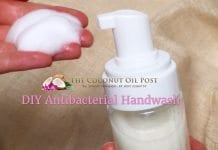


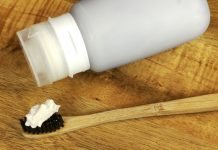


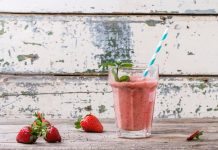
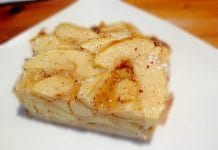



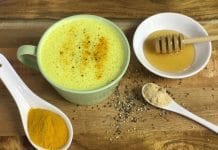
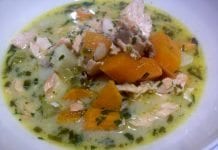


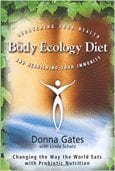
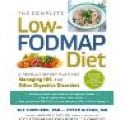













Glad I was helpful to you Kerry. It is a tough area at first to get your head around but you obviously have your head around it now.
The Title in this article contains the substances ‘Salicylates’ and ‘Amines’ but you haven’t mentioned these at all. . Coconut Oil is high in ‘Salicylates’??? This isn;t helpful for people who have intolerances to FODMAPS and Salicylates. But thanks for taking the time to post what you have so far.
This is part 1 of a 3 part series. Part 3 goes into more detail of what salicylates and amines are all about. You can read about them in the other articles I wrote. Read Part 2 and Part 3 https://coconutoilpost.com/special-diets/land-of-fodmap-fructose-malabsorption-part-2/
https://coconutoilpost.com/special-diets/fructose-intolerance/land-fodmap-fructose-malabsorption-amines-salycilates-part-3/ plus I also wrote an article about Coconuts and Salicylates Sensitivity. https://coconutoilpost.com/special-diets/amine-and-salicylate-sensitivity/coconuts-salicylate-sensitivity/.
Hi Kerry, Thanks for your article. I’m working through my intolerances and at the moment it feels like I should just live on air and water. I’m FODMAP intol, as well as Salicylates, and Amines. Have you come across a diet plan which caters for low Fodmaps, S & A’s? Its a nightmare just trying to work out what I can and can’t have.